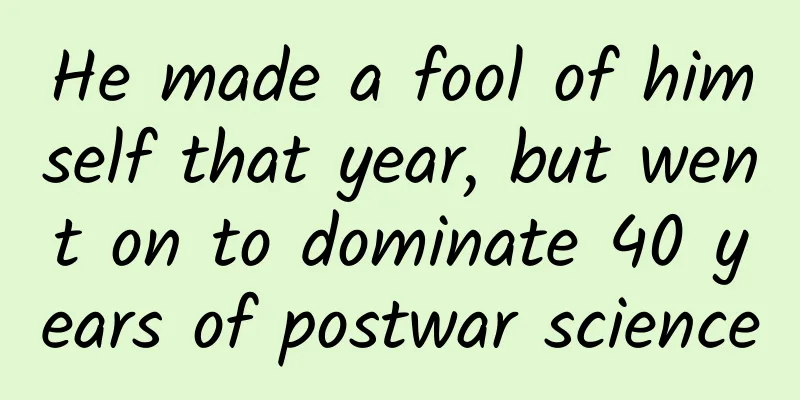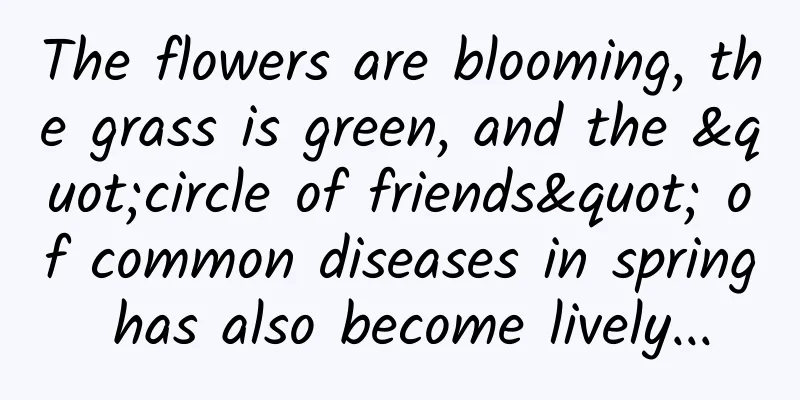He made a fool of himself that year, but went on to dominate 40 years of postwar science

|
Richard Feynman (1918-1988). Image source: Wikipedia Introduction: The word to use when talking about Feynman is “genius.” He took center stage and stayed there for four decades, dominating the science of the postwar era—four decades that took the study of matter and energy down an unexpectedly dark path. In the spring of 1948, at a conference attended by top physicists such as Bohr, Fermi, and Dirac, Feynman, who was about to turn 30, encountered setbacks when explaining his latest ideas. But it was this seemingly embarrassing achievement at Pocono that ultimately tied together all the disparate phenomena of light, radio, magnetism and electricity into one experimentally perfect combination. It won Feynman a Nobel Prize, as would at least three other achievements: the theory of superfluidity, the strange, frictionless behavior of liquid helium; the theory of weak interactions, the forces at work in radioactive decay; and the theory of partons, the hypothetical hard particles inside atomic nuclei that fueled the modern understanding of quarks. Feynman, a curious boy, a passionate lover, a Nobel Prize winner, an atomic bomb maker, a member of the Challenger accident investigation committee, a bongo drummer, a master of lock picking... He opened up an extraordinary path for 20th century physics. From top scientists to the curious public, Feynman left an extraordinary mark on everything he participated in and everyone he came into contact with. In Gleick's writing, Feynman's world of thought is as wonderful as his life. The brilliant legacy this genius left to the world is not only knowledge, but also thought: In this uncertain world, what do we really need to know? How should we understand? What is the meaning of understanding the world? This article is excerpted from "The Biography of Feynman" [US] James Gleick James Gleick | Written by "Nothing is certain, and we can always turn danger into safety." This hopeful message traveled from the secret world of Los Alamos to a nursing home in Albuquerque. Later, demons tormented the minds of the bomb builders. J. Robert Oppenheimer gave a speech revealing his shadowed mind, his discomfort at being given the power of self-destruction, and other physicists began to feel it, too. Richard Feynman, who was younger and had less responsibility, felt a more personal sadness: He felt that his knowledge had left him lonely and isolated. It bothered him that ordinary people went about their ordinary lives, oblivious to the nuclear disasters that science had prepared for them. Why build roads and bridges that would last a century? If people knew what Feynman knew, they certainly wouldn't do it. The war was over, a new era of science had begun, and he was uneasy. For a while, Feynman could barely work—by day, he was a carefree, excitable professor at Cornell University, and by night, he reveled in love, from freshman parties (where the ladies gave the clumsy dancer who claimed to be an atomic bomb scientist a wide berth) to bars and prostitutes. Meanwhile, when his new colleagues (young physicists and mathematicians his own age) first met Feynman, they quickly formed impressions of him. Freeman Dyson (another budding prodigy) wrote to his parents in England about Feynman: “Part genius, part clown.” He came across as an enthusiastic American—free and full of life. It took Dyson some time to realize how obsessed his new friend was with delving into the building blocks of modern science. In the spring of 1948, 27 physicists, still in the shadow of the atomic bomb they had created, gathered at a resort hotel in the Pocono Mountains of northern Pennsylvania to face the crisis. With the help of Oppenheimer (who now acted more like their spiritual leader than ever), they scraped together a little over a thousand dollars to pay for their room, train tickets, and a few drinks. For the first and only time in the history of science, these men had come together under these circumstances, without ceremony or publicity, and they were living out the fantasy that their work could remain a small, personal, academic enterprise, invisible to most of the public, just as a small building in Copenhagen, Denmark, had been the epicenter of their science a decade earlier. They had not yet realized how they had succeeded in convincing the public and the military that physics was a highly skilled and expensive endeavor. The meeting was closed to the public and unrecorded, except for a select few of the physics elite.[1] The following year, most of the group met again, hauling two blackboards and 82 cocktail and brandy glasses in Oppenheimer’s station wagon, but by then the “modern history” of physics had truly begun, science had reached an unprecedented scale, and these top physicists would no longer gather privately just for work. Stills from the movie Oppenheimer The atomic bomb demonstrated the superiority of physics. Behind the abstract concepts written by scientists, they found the key that could change history. How could these people know? The mass of an electron? That's debatable: a quick glance gives a reasonable number, a closer look turns out to be infinite—utter nonsense. The very concept of mass is indeterminate: it's not quite matter, but it's not quite energy either. Feynman thought of an extreme view. He had a cheap olive-green address book that contained mostly women's phone numbers (with notes like "Beautiful Dancer" or "Call When Her Nose Isn't Red"), and on the last page he wrote something like a Japanese haiku: in principle, You can't say A is made up of B. vice versa. All qualities are interactions. Even when quantum physics worked, it left scientists with an uncomfortable gap in the sense that it predicted the behavior of nature, and their description of reality was supposed to be like that. Some of them (though Feynman was never one of them) believed Werner Heisenberg’s quip: “The equations know everything.” They had few options. These scientists didn't even know how to imagine the atom they had just split. They had created a picture, then discarded it: tiny particles orbiting the nucleus like planets orbiting the sun. Now they had nothing to replace that picture. They could write numbers and symbols on legal pads, but their mental picture of the matter behind the symbols had been reduced to a vague unknown. When the Pocono Conference began, Oppenheimer was at the height of his fame, having risen as the hero of the atomic bomb program and not yet fallen as the antihero of the safety reviews of the 1950s. He was the titular chairman of the conference, which was attended by many more accomplished physicists. Pocono Conference, 1948. Image credit: Caltech Archives. Niels Bohr, the father of quantum theory, had come from his institute in Denmark; Enrico Fermi, the creator of the nuclear chain reaction, had come from his laboratory in Chicago; Paul AM Dirac, the British theorist whose famous equations about the electron set the stage for the present crisis. It went without saying that they were all Nobel Prize winners; with the exception of Oppenheimer, almost everyone present had won or was about to win that honor. Several European scientists were absent, including Albert Einstein, who was in statesmanlike retirement, but the Pocono conference represented the entire clergy of modern physics. As the evening wore on, Feynman began to speak. Chairs were shifted. The clergy had a hard time keeping up with the rude young man. They had spent most of the day listening to a remarkable lecture by Feynman’s contemporary, Julian Schwinger of Harvard. His lecture was also difficult to follow (Schwinger’s work, when published, violated Physical Review’s rules on the width of the page for equations) but still compelling. Feynman produced fewer and fewer rigorous equations. In any case, these people knew that Feynman was from Los Alamos. Oppenheimer himself had privately noted that Feynman was the most brilliant young physicist on the atomic bomb project.[2] As to why Feynman had acquired such a reputation, none of them could say. Few knew about his contributions to the key equations for the efficiency of nuclear explosions (which remained secret 40 years later, but were quickly relayed to his suspicious Soviet employers by the spy Klaus Fuchs) or his theory of predetonation, which measured the probability that a piece of uranium would explode prematurely. Even without being able to describe Feynman’s actual scientific work, they had a raw, powerful image in their minds. They remembered Feynman organizing the world’s first large-scale computing system, with its new electromechanical business calculator and its team of women with color-coded cards; or delivering a hypnotic lecture on elementary arithmetic; or frantically twisting a control knob in a game that caused a pair of electric trains to crash together; or sitting resolutely upright, motionless, in the purple-white glare of an explosion in an army weapons transport vehicle. In the reception room at the Pocono Manor, facing his predecessors, Feynman realized that he was sinking deeper and deeper into confusion. He was uncharacteristically nervous. He had been unable to sleep. He had also heard Schwinger’s elegant lectures and worried that his own seemed incomplete by comparison. He was trying to come up with a new procedure for making the more precise calculations that physics now demanded—not just a procedure but a vision, a picture of pulsating, jiggling particles, symbols, arrows, and fields. These ideas were foreign, and his slightly brash style irritated some European scientists. His vowels sounded like a cacophony of urban noise. His consonants were slurred, making him seem particularly inferior to Europeans. He rocked back and forth, spinning a piece of chalk rapidly between his fingers, round and round. He was a few weeks shy of his 30th birthday, and by age he was no longer a child prodigy. He tried to skip over some of the details that seemed controversial, but it was too late. Edward Teller (the controversial Hungarian physicist who was preparing to lead the post-World War II “super” hydrogen bomb project) interrupted Feynman with a question about basic quantum physics: “What about the exclusion principle?” Feynman had hoped to sidestep this problem. The exclusion principle meant that only one electron could be in a particular quantum state; Teller thought he had caught “two rabbits in the same hat.” In fact, in Feynman’s system, particles did seem to violate this deeply held principle, appearing in illusory flashes. He began to answer: "It's no different--" "How do you know?" "I know, I came from a—" "How is that possible?!" said Teller. Feynman was drawing unfamiliar diagrams on the blackboard. He showed a particle of antimatter moving backward in time. This puzzled Dirac, who had first predicted the existence of antimatter. Dirac now asked a question of causality. "Is it unitary?" Unitary! What did he mean? “I’ll explain it to you,” Feynman said, “and then you can see how it works, and then you can tell me whether it is unitary or not.” He continued, and from time to time he could still hear Dirac mumbling, “Is it unitary?” Feynman had an astonishing talent for calculations but was strangely ignorant of the literature; he was passionate about physics but very frivolous about proofs - he once overestimated his ability to attract and convince these great physicists. Yet in fact, **he had now found what all his predecessors had eluded: a method for carrying physics into a new era. **He had created a new, personal science, combining past and future in one vivid and magnificent tapestry. His new friend at Cornell University, Dyson, glimpsed this. “ This marvelous world view of a world woven together by world lines in space and time, with everything moving freely, ” Dyson described, “a unifying principle that either explained everything or nothing.” Twentieth-century physics had reached a fringe. Older physicists were searching for a way to leap over the computational barriers they were encountering. Feynman’s audience was hungry for new ideas from younger physicists, but they were at their wits’ end with a certain view of the atomic world—or rather a series of different views, each with its own personal puzzlement. Some people think primarily in waves—mathematical waves that carry the past into the present. Of course, these waves often manifest themselves as particles, like the particle trajectories that Feynman drew and erased on the blackboard. Some people simply seek refuge in mathematics, a series of difficult calculations, using symbols as stepping stones in diagrams that traverse the fog. Their systems of equations represent a submicroscopic world that defies the logic of everyday things like baseballs and water waves, as WH Auden put it (in a poem that Feynman loathed[4])[5]: Sufficient quality, It's all there. Instead of uncertain gruel, Some are somewhere else. The objects of quantum mechanics always have parts that are somewhere else. The wire-mesh diagrams that Feynman had drawn on the blackboard seemed remarkably deterministic by comparison. The trajectories looked classical in their precision. Niels Bohr stood up. He knew the young physicist from Los Alamos—Feynman had argued with Bohr, with no scruples, and with impunity. Bohr had valued his candor and had sought Feynman’s private advice at Los Alamos, but now Bohr was troubled by the obvious implications of those crisp lines. Feynman’s particles seemed to follow neat, fixed paths in space and time. Particles couldn’t do that. That’s what the uncertainty principle said. Bohr said, or so Feynman understood, "We have learned that the classical idea of a trajectory in a path does not make sense in quantum mechanics." Bohr, whose soft voice and famously slurred Danish intonation made it difficult for the audience to understand, stepped forward and gave a minutes-long lecture on the uncertainty principle. Feynman stood aside, feeling embarrassed. He was in despair. At Pocono, one generation of physics was merging into the next, and the transition was neither as complete nor as inevitable as it later seemed. Architect of quantum theory, young leader of the atomic bomb project, inventor of the ubiquitous Feynman diagrams, passionate bongo drummer and storyteller - Richard Phillips Feynman is the smartest, most iconic and most influential physicist of the modern era. He shaped the unfinished concepts of waves and particles in the 1940s into tools that ordinary physicists could use and understand. He had a keen insight to see to the heart of the problems posed by nature. Among physicists, whose organized, tradition-bound culture demands heroes but sometimes mistrusts them, Feynman’s name has a special aura. The word genius is appropriate for Feynman. He took center stage and remained so for four decades, dominating the science of the postwar era—four decades that turned the study of matter and energy down an unexpected, dark path. **The work, which had its twists and turns at Pocono, ultimately tied together all the disparate phenomena of light, radio, magnetism and electricity into one experimentally elegant package. ** It won Feynman a Nobel Prize, as would at least three other achievements: the theory of superfluidity, the strange, frictionless behavior of liquid helium; the theory of weak interactions, the forces at work in radioactive decay; and the theory of partons, the hypothetical hard particles inside atomic nuclei that fueled the modern understanding of quarks. As scientists younger than him explored esoteric new frontiers, Feynman’s ideas about particle interactions kept returning to the forefront of physics. He continued to search for new puzzles. He could not, or would not, distinguish between the famous problems of elementary particle physics and the apparently unremarkable everyday problems of an earlier era. No other physicist since Einstein has so selflessly taken on the challenge of all of nature’s puzzles. Feynman studied the friction of highly polished surfaces, hoping to understand how friction worked (and failing, for the most part). He tried to develop a theory about how wind makes ocean waves grow. “We put our foot in a swamp, and when we pulled it up it was muddy,” he later said. He explored the connection between atomic forces and the elastic properties of the crystals they formed. He combined experimental data and theoretical ideas to fold strips of paper into strange shapes, called “foldovers.” He made influential advances in the theory of quantum gravity that Einstein had ignored, but not enough to satisfy himself. He struggled for years without being able to conquer turbulence in gases and liquids. Feynman’s status among physicists transcends the sum of his actual contributions to the field. In his 20s, with little more than a doctoral dissertation (deeply original but little known) and a few secret papers in the Los Alamos archives, his legend was already beginning to grow. He was a master of calculation: in a group of scientists, he could impress by solving a puzzle. As a result, the scientists (who considered themselves intolerant utilitarians) soon found themselves outmatched by Feynman. His mystique was comparable to that of a gladiator or a champion wrestler. His lack of gravitas, his unfettered propriety, seemed to announce to the crowd: here is an unconventional soul. A team of physicists assembled for the Manhattan Project first met Feynman in Chicago, where he solved a problem that had puzzled the team for a month. As one scientist later put it, this was "a superficial way to judge a brilliant mind," but they were impressed by Feynman's unprofessional manner as well as his achievements. "Feynman was clearly not like most young scholars in the prewar style. His gestures were as fluid and expressive as a dancer's, his rapid-fire Broadway speech, his catchphrases like a charlatan, and his speech as dynamic as an opening and closing origami game of East, West, and West." Physicists quickly picked up on his leaping, theatrical style, his habit of bouncing his feet back and forth as he lectured. They knew he could never sit still for long, and when he did sit down, he would recline comically before jumping up to ask pointed questions. To Europeans like Bohr, Feynman’s voice, like all the American voices they had heard, was like music played with sandpaper; to Americans, it represented raw, hard-nosed New York. No matter. “We had an indelible star image,” another young physicist noted, “who burst with light and with wit. … In Greek, isn’t areté ‘luminous charisma’? He had that quality.” Originality was his obsession. He had to create from first principles, a dangerous virtue that sometimes led to waste and failure. He was often a crank, a misfit. He was willing, even eager, to consider foolish ideas and to stumble down the wrong path. This strength might have been a weakness if it had not been redeemed time and again by a formidable intellect. “Dick A. could get away with a lot of things because he was so damn smart,” one theorist said. “He could literally climb Mont Blanc barefoot.” Isaac Newton said he had stood on the shoulders of giants. Feynman tried, through all sorts of contortions, to stand on his own shoulders. At Cornell University, mathematician Mark Kac, who has been observing Feynman, sees it this way: There are two kinds of geniuses, the "ordinary genius" and the "magician". The "ordinary genius" is a fellow who you and I would be just as good as, or at best many times better than us. There is no mystery about how his mind works. Once we understand what he does, we are convinced that we can do it too. The "magician" is different. In mathematical terms, they are in the "orthogonal complement" of ours, and the intent and purpose of their mind's workings are incomprehensible. Even after understanding what they do, the process is mysterious to us. They (indeed) rarely take students because they cannot be imitated. It must be very frustrating for a bright young person to cope with the mysterious workings of a magician's mind. Richard Feynman was a magician of the highest order. Feynman hated the embellished myths of most scientific histories, which conflated false steps and uncertainties of stasis beneath the veneer of orderly intellectual progress, but he created a myth of his own. As he ascended to the pinnacle of physicists' "Hall of Heroes," stories of his genius and adventure became an art form in the physics community. Feynman's stories were clever and hilarious. They gradually created a legend in which the true subject (and the gist of the story) rarely emerged. Many of the stories were transcribed and published in two books in the 1980s, with the witty titles Surely You're Joking, Mr. Feynman! and What Do You Care What Other People Think? To the publisher's surprise, the books became popular bestsellers. When Feynman died in 1988, the acerbic Murray Gell-Mann, his friend, collaborator, office neighbor, foil, competitor, and antagonist, infuriated Feynman’s family at his memorial service by asserting that “he surrounded himself with a mythology and spent a great deal of time and energy creating anecdotes about himself.” In these stories, Gell-Mann added, “he had to be present and, if possible, to appear superior to the rest of the group.” In these stories, Feynman is a gadfly, a prodigal, a clown, a naive; a thorn in the side of military censors in the atomic bomb project; an outsider who brushed aside bureaucracy and exposed the real reasons on the committee investigating the 1986 space shuttle explosion. He was an enemy of pomp and circumstance, of deception and hypocrisy. He was the boy who saw that the emperor had no clothes, and he was also like that in life. Yet Gell-Mann was also telling the truth. In the legends, people have misunderstood Feynman's achievements, his working style, and his deepest beliefs. His view of himself did more to conceal the essence of his genius than to reveal it. Feynman’s reputation, as well as his person, has become a monument, standing in the landscape of modern science. In the language of physicists, Feynman diagrams, Feynman integrals, and Feynman rules have joined Feynman’s story. When they talk about a promising young colleague, they say, “He’s not Feynman, but…” When Feynman enters a room where physicists gather, such as the student cafeteria at Caltech or the auditorium of any scientific conference, the noise level rises and the commotion seems to start wherever he appears with his tray or takes his seat in the front row. Even his more senior colleagues try to observe him quietly. Younger physicists are attracted by Feynman’s informal charm. They imitate Feynman’s handwriting and the way he “throws” equations onto the blackboard. One group has a half-joking debate on the question, “Is Feynman a human?” They envy Feynman’s sudden inspiration (as they see it). They also admire Feynman’s other qualities: his belief in the simple truths of nature, his skepticism of authoritative wisdom, and his impatience with mediocrity. ——Interaction issues—— What do you know about Feynman? Comments are welcome~ |
>>: The insurmountable “4”: If this number is exceeded, will people’s judgment decline?
Recommend
information! Major update to the Apple Store backend, monitoring of 5 major download data sources is beneficial to developers!
On May 3, Apple made a high-profile announcement ...
How to do content operation? It’s all here!
"Content" in a broad sense includes mus...
Kirin Society novel becomes combat class (completed)
Qilinshe VIP paid project course "Novel into...
Why doesn’t Pinduoduo have a shopping cart?
In October 2019, Pinduoduo's market value sur...
WeChat 8.0 To add friends, you must set friend permissions
IT Home reported on January 22 that WeChat had a ...
Scientific answers: What is the time dilation effect of relativity, and can it make people immortal?
Yesterday, I published an article introducing the...
How could this slippery, elusive slime be so important to science?
Leviathan Press: In The Matrix, when the protagon...
What does it mean when cholesterol is too high? Is lower the better? How can we control it?
Many people find that their total cholesterol lev...
"Highly Disseminated" Fission Poster Design Routine
Visual aesthetics is prevalent nowadays, and visu...
Lenovo: We have the responsibility to promote the better development of the PC industry in China
Compared with the fierce competition in the mobil...
Weibo Brand Account Social Marketing Handbook
In 2021, will we still have Weibo? When brand blu...
Boxuegu-Data Analysis Course for Everyone
Course Catalog: ├──Chapter 1 Overview of the Care...
One trillion times brighter than the sun, this large scientific device will emit its first beam of light by the end of the year
The high-energy synchrotron radiation source of t...
The extraordinary existence in porcelain - Yongle and Xuande blue and white porcelain
Blue and white porcelain originated in the Tang D...









